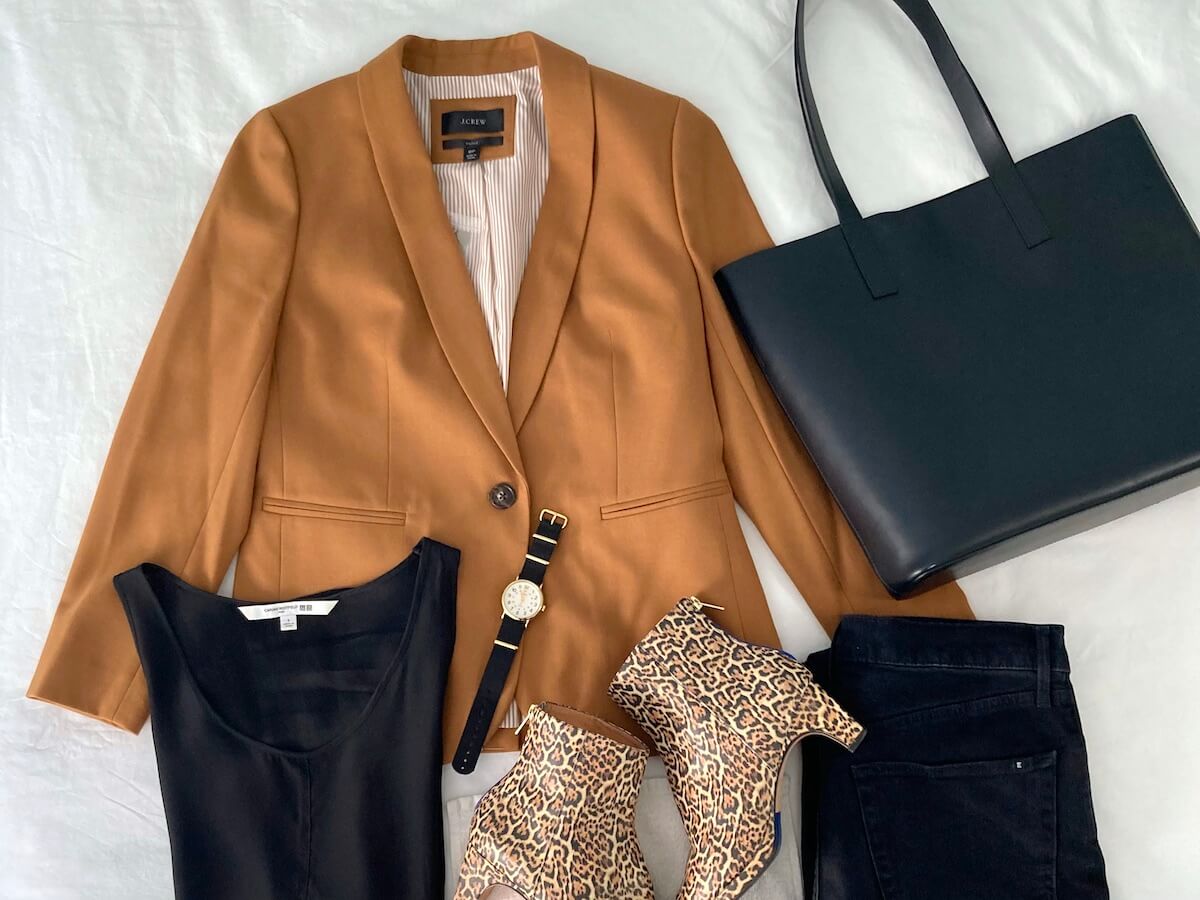I bought two things in September, both from fast fashion brands. While I try my best to shop from ethical brands, I don’t always succeed.
For me, the most important thing about striving towards more ethical consumption is changing my habits and slowing down my shopping. Buying lots of stuff, even sustainably-made or secondhand stuff, is still buying lots of stuff.
To shop more mindfully, I’ve put strategies into place to think through potential purchases — and they’re working! I buy way less than I used to. (Here are some numbers that I crunched last year). Of what I do buy these days, most of those items are ethical brands.
Reasons To Buy Fast Fashion
But sometimes fast fashion happens. And I think that’s OK. My recent purchase of a blazer from J. Crew illustrates why you might go for a fast fashion item, even when you’re a conscious consumer.
** This post contains affiliate links. If you shop through my links, I may earn a commission. Thank you for supporting Welcome Objects. **
1. Your size is available.
Many ethical fashion brands are smaller operations that may not produce your size. I’m petite. Often I’m able to make that work when it comes to an ethical brand. I scour reviews and when people complain about something being too short, that’s a hint that it might work for me. With pants I look for ankle or cropped lengths (which become regular length on me.) Or I just take things to the tailor and pay the short person tax for hemming.
The right size means I’m more likely to feel good in it and wear it.
But altering a blazer is a lot of work — and a pricey proposition. I’d rather just find a well-cut blazer in the right size in the first place. The right size means I’m more likely to feel good in it and wear it. I’ve only come across a few ethical brands with petite sizing: Eileen Fisher, Universal Standard, and Reformation. Eileen Fisher’s blazer styles didn’t appeal to me, and while I did find this Universal Standard petite blazer, it was polyester — a material I’m trying to avoid. So, I went to J. Crew because I knew they’d have more options for me.
2. It fits your budget.
Let’s face it. Responsibly-made items cost more and are out of reach for many people. While I’m willing to pay more for a higher-quality, ethically-made piece, I also need to stick to a budget. With sales and a coupon, I was able to buy the J. Crew blazer at a significant discount that comfortably fit my budget.
3. The details are right.
Whether it’s the color, an aspect of the design, the sleeve length, or whatever detail you have in mind, I find that if I’m feeling picky about something, it’s best to stick to my vision or I’ll just end up feeling dissatisfied with my purchase. In this case, I was looking for a dark-ish camel color, and J. Crew had it.

J. Crew Parke Blazer in wool flannel – $228 (original price) but currently 40% off
I also want to note that I tried finding a blazer that fit my requirements on the secondhand market. Shopping secondhand and keeping an item out of the landfill is more sustainable than buying brand new. When I couldn’t find what I was looking for, I decided to buy it new.
How To Shop Fast Fashion More Responsibly
Here’s a few tips for how to make the most out of shopping more mindfully, even when shopping fast fashion.
1. Check for quality.
Whatever I buy I intend for it to last. Does the brand have a reputation for quality? In my experience, J.Crew items (with the one exception of some acetate earrings) have been well made. If you’re shopping in person, turn the garment inside out to check the seams and workmanship. Does the stitching look straight and tight?
2. Materials matter.
I always check the tag to see what something is made out of. I prefer natural fibers, which are often more breathable. (In this case, the J. Crew blazer is wool, though there is a touch of spandex.) Natural fibers biodegrade better than polyester, acrylic, and other plastic-based fibers and won’t shed microfibers. About 60% of clothing these days are made out of plastic! Price, by the way, isn’t necessarily an indication of better materials. I was browsing in a small boutique recently, checked the materials tag on a cute $250 sweater, and found that it was acrylic.
3. Go for classic styles — whatever classic means to you.
Is this a style that you can wear for a long time? Does it play well with your wardrobe? When the camel blazer arrived, I started styling it and building outfits to see how versatile it would be. I saw that it went well with the colors I tend to wear. And I already have the perfect booties to go with it. Once I saw the many ways I could wear it, I decided to keep it.




